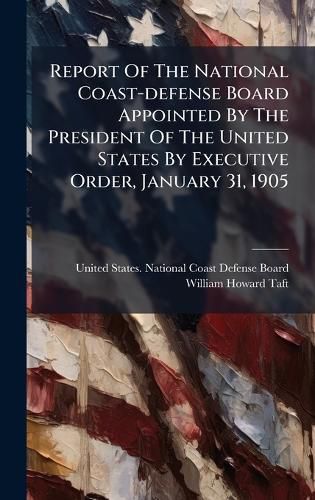Readings Newsletter
Become a Readings Member to make your shopping experience even easier.
Sign in or sign up for free!
You’re not far away from qualifying for FREE standard shipping within Australia
You’ve qualified for FREE standard shipping within Australia
The cart is loading…






This is the "Report of the National Coast-Defense Board Appointed By The President Of The United States By Executive Order, January 31, 1905." It details the findings and recommendations of a board convened to assess and improve the coastal defenses of the United States. Led by William Howard Taft, the board undertook a comprehensive study of existing fortifications, technologies, and strategic vulnerabilities. The report offers insights into the military thinking and technological capabilities of the era.
Providing a snapshot of American defense strategy at the dawn of the 20th century, this document is an invaluable resource for military historians, students of political science, and anyone interested in the evolution of U.S. national security policy. It illuminates the challenges of defending a vast coastline in a rapidly changing world and the innovative solutions proposed to meet those challenges.
This work has been selected by scholars as being culturally important, and is part of the knowledge base of civilization as we know it. This work was reproduced from the original artifact, and remains as true to the original work as possible. Therefore, you will see the original copyright references, library stamps (as most of these works have been housed in our most important libraries around the world), and other notations in the work.
This work is in the public domain in the United States of America, and possibly other nations. Within the United States, you may freely copy and distribute this work, as no entity (individual or corporate) has a copyright on the body of the work.
As a reproduction of a historical artifact, this work may contain missing or blurred pages, poor pictures, errant marks, etc. Scholars believe, and we concur, that this work is important enough to be preserved, reproduced, and made generally available to the public. We appreciate your support of the preservation process, and thank you for being an important part of keeping this knowledge alive and relevant.
$9.00 standard shipping within Australia
FREE standard shipping within Australia for orders over $100.00
Express & International shipping calculated at checkout
Stock availability can be subject to change without notice. We recommend calling the shop or contacting our online team to check availability of low stock items. Please see our Shopping Online page for more details.
This is the "Report of the National Coast-Defense Board Appointed By The President Of The United States By Executive Order, January 31, 1905." It details the findings and recommendations of a board convened to assess and improve the coastal defenses of the United States. Led by William Howard Taft, the board undertook a comprehensive study of existing fortifications, technologies, and strategic vulnerabilities. The report offers insights into the military thinking and technological capabilities of the era.
Providing a snapshot of American defense strategy at the dawn of the 20th century, this document is an invaluable resource for military historians, students of political science, and anyone interested in the evolution of U.S. national security policy. It illuminates the challenges of defending a vast coastline in a rapidly changing world and the innovative solutions proposed to meet those challenges.
This work has been selected by scholars as being culturally important, and is part of the knowledge base of civilization as we know it. This work was reproduced from the original artifact, and remains as true to the original work as possible. Therefore, you will see the original copyright references, library stamps (as most of these works have been housed in our most important libraries around the world), and other notations in the work.
This work is in the public domain in the United States of America, and possibly other nations. Within the United States, you may freely copy and distribute this work, as no entity (individual or corporate) has a copyright on the body of the work.
As a reproduction of a historical artifact, this work may contain missing or blurred pages, poor pictures, errant marks, etc. Scholars believe, and we concur, that this work is important enough to be preserved, reproduced, and made generally available to the public. We appreciate your support of the preservation process, and thank you for being an important part of keeping this knowledge alive and relevant.